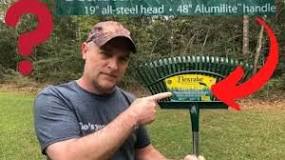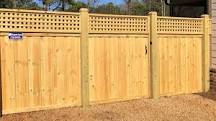So, you’re wondering how often should you dethatch your lawn? Well, the short answer is: it really depends on your lawn’s condition, but generally, you should aim to dethatch once a year. However, some lawns might need it more frequently, while others could go a couple of years without it. Let’s dive into the details!
What is Dethatching?
Before we get into the nitty-gritty of frequency, let’s quickly cover what dethatching actually is. Dethatching is the process of removing thatch—a layer of dead grass, roots, and other organic material that can build up on your lawn. While a little thatch can be beneficial, too much can suffocate your grass and lead to all sorts of problems.
Signs Your Lawn Needs Dethatching
You might be wondering how to tell if your lawn is ready for a dethatch. Here are some signs to watch out for:
Thick Thatch Layer
If you can see a thick layer of brown material between the soil and healthy grass, it’s time to take action. Ideally, you want less than half an inch of thatch.
Poor Drainage
Is water pooling on your lawn after rain? A thick thatch layer can prevent proper drainage and lead to soggy spots.
Yellowing Grass
If your grass is looking yellow or unhealthy despite regular watering and fertilization, it could be struggling to get nutrients through that thick layer of thatch.
Best Time to Dethatch
Timing is everything when it comes to dethatching. The best time to do it is during your lawn’s active growing season. For cool-season grasses, this usually means early spring or early fall. Warm-season grasses thrive with dethatching in late spring or early summer.
How Often Should You Dethatch?
Now back to the big question: how often?
General Rule
As mentioned earlier, once a year is typically sufficient for most lawns. However, if you notice any of those signs mentioned earlier or if your lawn gets heavy foot traffic, you might need to do it more often.
Grass Type Matters
Different types of grass have different needs. For instance:
- Cool-season grasses may require more frequent dethatching if they grow vigorously.
- Warm-season grasses can often go longer between dethatching sessions.
Summary
Dethatching your lawn is an essential part of maintaining its health and appearance. While once a year is a good rule of thumb, always keep an eye on your lawn’s condition and adjust accordingly. Healthy grass equals a happy yard!
FAQ
How do I dethatch my lawn?
You can use a dethatching rake for small areas or rent a power dethatcher for larger lawns. Just make sure to follow up with proper watering and fertilization!
Can I dethatch in the fall?
Yes! For cool-season grasses, early fall is actually one of the best times to dethatch as the grass will recover quickly before winter sets in.
What happens if I don’t dethatch?
If you skip dethatching for too long, you might end up with poor drainage, unhealthy grass, and even pest problems. It’s better to stay on top of it!
Is dethatching the same as aerating?
Not quite! Dethatching removes the layer of thatch on top of the soil while aerating creates holes in the soil to improve air and nutrient flow. Both are important but serve different purposes.







